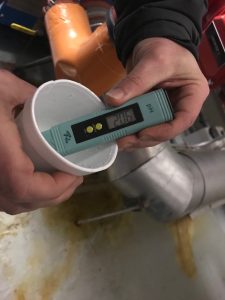Since the introduction of high-efficiency appliances to the HVAC industry, there has been a long-standing debate whether it is safe to use PVC and CPVC for flue gas conveyance. With the advent of polypropylene to the market the debate has only increased. Below are some of the advantages of this newer polypropylene piping over its historically used PVC and CPVC competitors:
- Higher Temperature Rating: PVC and CPVC can distort at temperatures above 149°F and 194°F respectively, posing a life safety hazard. This overheating of PVC & CPVC can allow dangerous products of combustion to escape into occupied spaces, as well as produce and release toxic fumes that are a health risk to humans. Polypropylene has a much higher maximum temperature of 230°F and therefore is much more resistant to melting.
- More Reliable Joint Connection: PVC and CVPC utilize solvent cement to seal joints, with a recommended temperature range of 110°-150°F. Most polypropylene flue products are gasketed to their 230°F temperature rating, to eliminate the risk of joint failure due to overheating.
- Listed & Tested to UL1738 Standards: PVC & CPVC have never been tested and listed for the use of venting gas burning appliances. UL1738 is the widely accepted standard for venting materials servicing condensing high-efficiency appliances.
- More Sustainable: Piping made from polypropylene is more sustainable than PVC and CVPC because it is corrosion-proof and has chemical resistance to sulfuric acid, hydrochloric acid and aromatic hydrocarbons. Because polypropylene is made from raw material, it is also an environmentally-friendly option that is fully recyclable.
- Lighter Weight: Polypropylene is significantly lighter, weighing in at about one-third the total weight of PVC and CVPC. These lighter pipes are easier to maneuver, meaning faster installation times that boost your bottom line.
- Fast Lead Times: Polypropylene is listed for use as a flue pipe, while PVC and CPVC are not. Typically, the only other option for flue pipe is stainless steel, which has longer lead times than polypropylene. Utilizing the polypropylene option can result in quicker project completion.
In this new era of HVAC, virtually all retrofits as well as new installations are utilizing polypropylene pipe technology. Our partner Centrotherm has been proudly manufacturing and distributing Innoflue® polypropylene solutions since 1994. Their products are listed to UL-1738 and ULC-S636 standards, backed by a 10-year limited warranty. Learn more here.



